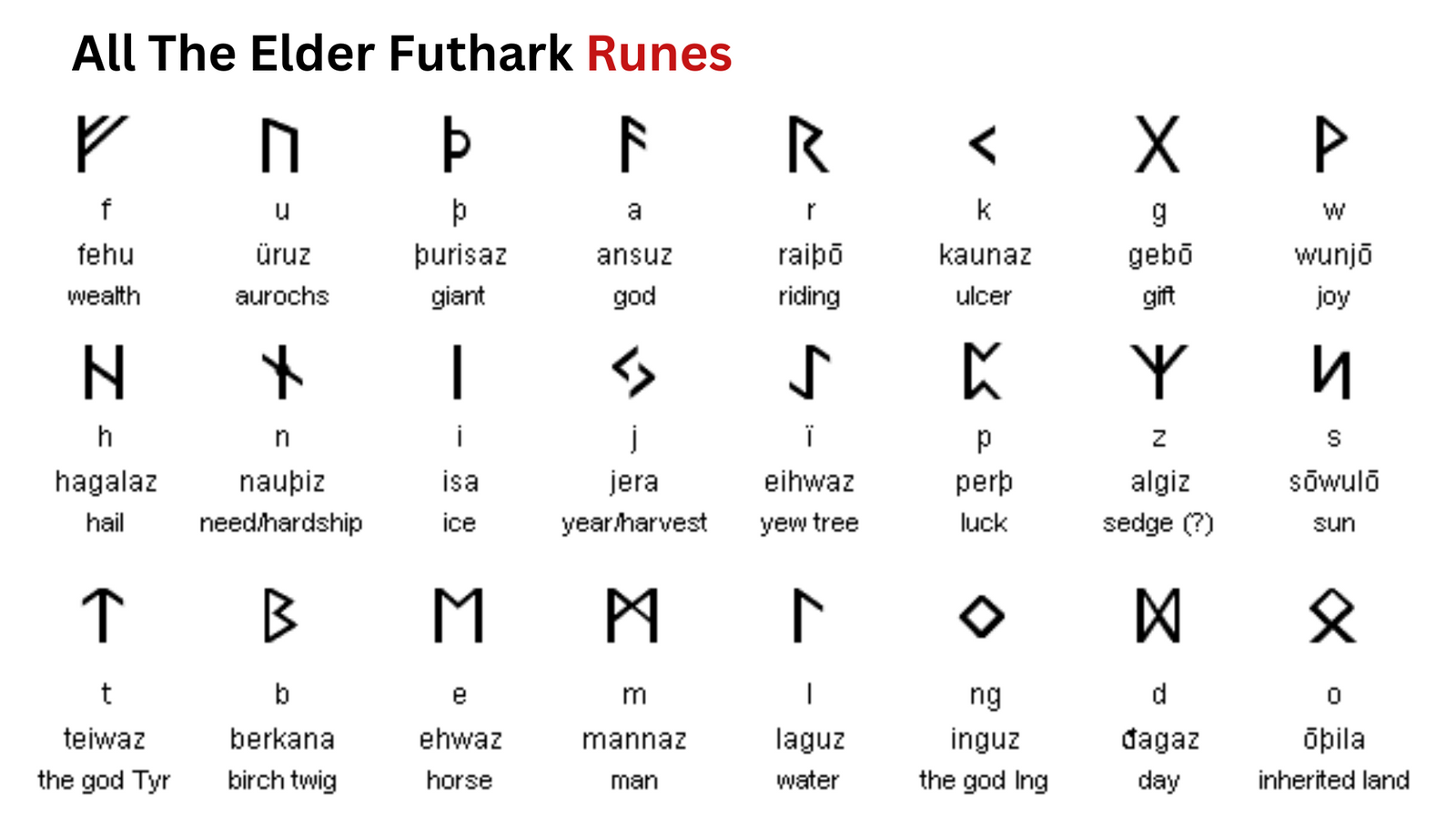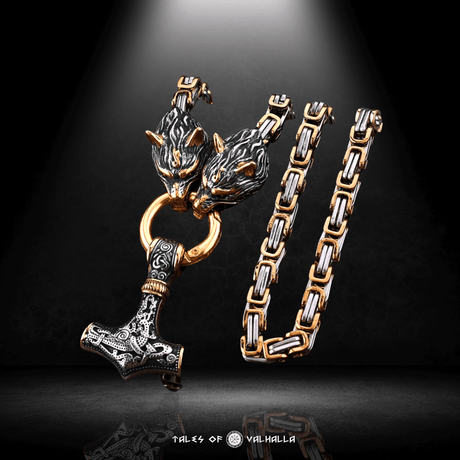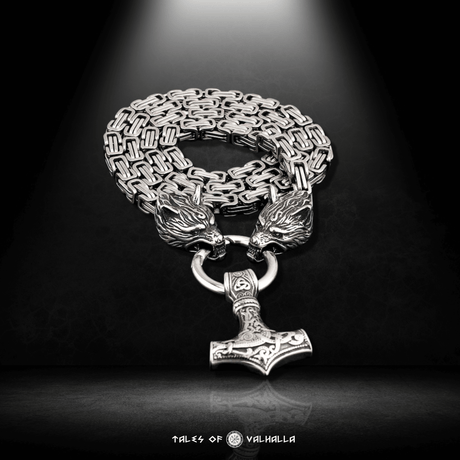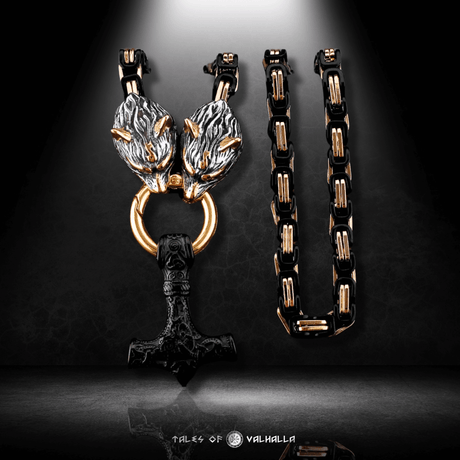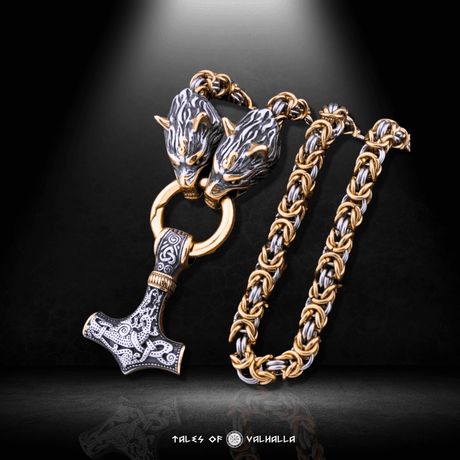The Mystique of Viking Runes
Viking runes have long captured the imagination of history enthusiasts, mystics, and fans of Norse mythology. These ancient symbols, often associated with powerful magic and deep wisdom, appear in countless movies, books, and games, symbolizing mystery and the unknown. But beyond their role in popular culture, Viking runes are a real and fascinating part of history—an ancient alphabet used by the Norse people to communicate, record, and even invoke the divine.
Runes were more than just letters; they were seen as tools of power, capable of influencing the world around them. Each rune carried its own meaning and significance, often linked to the natural world, gods, and daily life. The runic alphabet, known as the Futhark, was carved into wood, stone, and metal, leaving a lasting legacy that still fascinates scholars and enthusiasts today.
Why Viking Runes Matter Today
In our modern world, Viking runes have become symbols of ancient wisdom, spiritual exploration, and cultural identity. They connect us to a time when writing was a sacred act, imbued with meaning and purpose. As we explore the origins, meanings, and uses of Viking runes, we uncover a rich tapestry of history, mythology, and cultural significance that continues to resonate with us. Whether you’re interested in their historical context or their mystical allure, Viking runes offer a gateway to understanding the complex and intriguing world of the Norse people.
The Origins of Viking Runes

The Origins of Viking Runes
The Elder Futhark: The First Runic Alphabet
The story of Viking runes begins with the Elder Futhark, the earliest known runic alphabet, which was used by various Germanic tribes, including the Vikings. The Elder Futhark consists of 24 runes, each representing a sound in the language and a concept or idea. The name "Futhark" comes from the first six runes in the sequence: Fehu, Uruz, Thurisaz, Ansuz, Raidho, and Kenaz.
The origins of the Elder Futhark are shrouded in mystery, but it is believed to have developed around the 2nd century CE. Scholars suggest that the runes were likely influenced by earlier alphabets, such as the Latin or Greek scripts, yet they evolved into a distinctly unique system suited to the needs of the Germanic peoples. Runes were designed to be easily carved into wood, stone, or metal, making them highly practical for the Vikings, who lived in a world where written records were rare.
The Transition to the Younger Futhark
By the 8th century, the Elder Futhark began to give way to a new, simplified runic alphabet known as the Younger Futhark. This transition coincided with changes in the Old Norse language, and the Younger Futhark consisted of only 16 runes. Despite the reduction in the number of runes, this alphabet remained versatile, with individual runes often representing multiple sounds.
The Younger Futhark became the standard runic alphabet during the Viking Age, used for inscriptions across Scandinavia. It was during this period that runes became deeply embedded in Norse culture, appearing on everything from monumental rune stones to everyday objects. The shift from the Elder to the Younger Futhark reflects the adaptability of the runic system to the changing linguistic and cultural landscape of the Viking world.
The Mythological Origins of Runes
In Norse mythology, the runes are said to have been discovered by Odin, the Allfather and chief of the gods. According to the Poetic Edda, Odin hung himself from Yggdrasil, the World Tree, for nine days and nights, wounded by his own spear, in a self-sacrificial quest for knowledge. At the end of this ordeal, the runes revealed themselves to him, granting him profound wisdom and power.
This myth underscores the sacred nature of the runes in Viking belief. They were not merely tools for writing but were seen as gifts from the gods, imbued with magical properties. Odin's discovery of the runes symbolizes the idea that knowledge, especially of the esoteric kind, requires great sacrifice and dedication. This story also highlights the runes' connection to the divine, as they were believed to bridge the gap between the human and the supernatural.
The Meanings and Uses of Viking Runes

The Meanings and Uses of Viking Runes
The Individual Runes and Their Meanings
Each rune in the Viking runic alphabet carries its own distinct meaning, often linked to natural elements, deities, or fundamental concepts. For example:
- Fehu (ᚠ): Represents wealth, prosperity, and material abundance. It is associated with cattle, which were a primary measure of wealth in Norse society.
- Uruz (ᚢ): Symbolizes strength, health, and endurance, often associated with the wild ox, a creature revered for its power and resilience.
- Ansuz (ᚨ): Linked to Odin, this rune represents wisdom, communication, and the power of the spoken word. It is often associated with divine inspiration.
- Tiwaz (ᛏ): Represents justice, honor, and leadership, and is associated with the god Tyr, known for his bravery and sense of duty.
These are just a few examples, but each rune in the Futhark has multiple layers of meaning, ranging from the literal to the symbolic and mystical. Understanding these meanings is key to interpreting runic inscriptions and using runes in various practices.
Runes as an Alphabet: Writing and Communication
While runes were imbued with spiritual significance, they also served as a practical writing system. The Vikings used runes to carve inscriptions on a variety of surfaces, from monumental stones to everyday tools. These inscriptions could serve many purposes, such as memorializing the dead, marking territory, recording ownership, or conveying messages.
Runic inscriptions often had a direct and straightforward purpose, such as commemorating a fallen warrior or marking the boundaries of a chieftain's land. However, they could also contain elements of poetry, reflecting the Vikings' love of language and their skill in crafting words with multiple meanings. The use of runes for writing was widespread, but it was still somewhat limited by the difficulty of carving into hard materials, which meant that many messages were brief and to the point.
Runes in Magic and Divination
Beyond their use in writing, runes were also employed in magical practices and divination. The Vikings believed that runes held inherent power and could be used to influence the world around them. Runes were often inscribed on amulets, weapons, and other objects to provide protection, ensure victory in battle, or bring good fortune.
One of the most intriguing uses of runes was in divination. The practice of casting runes involved drawing runic symbols from a bag or casting them onto a cloth and interpreting the patterns they formed. Each rune's position and relation to others would provide insight into the future or guidance on important decisions. This form of divination was deeply respected, as it was believed that the runes could reveal the will of the gods.
Viking Rune Stones and Inscriptions

Viking Rune Stones and Inscriptions
The Tradition of Rune Stones
One of the most enduring legacies of the Viking Age is the tradition of rune stones—large stones carved with runic inscriptions that were often erected as memorials to the dead or as markers of significant events. These stones can be found throughout Scandinavia, with some of the most famous examples being the Jelling Stones in Denmark.
Rune stones served both practical and symbolic purposes. They were often placed in prominent locations, such as crossroads or near important landmarks, ensuring that the inscriptions would be seen by many. The messages on these stones varied, from honoring the memory of a loved one to boasting of achievements in battle or voyages across the sea. The carving of a rune stone was a significant undertaking, requiring both skill and resources, which meant that they were usually commissioned by wealthy or influential individuals.
Interpreting Runic Inscriptions
Interpreting runic inscriptions is a complex task that requires an understanding of both the runes themselves and the context in which they were used. Many runes have multiple meanings, and their interpretation can vary depending on the order in which they appear or the purpose of the inscription. Modern scholars have made significant progress in deciphering these ancient texts, but challenges remain, especially when dealing with incomplete or weathered inscriptions.
Runic inscriptions provide valuable insights into Viking society, revealing details about their beliefs, practices, and daily life. For example, inscriptions on memorial stones often include references to the deceased's family, accomplishments, and connections to the gods, offering a glimpse into the values that were important to the Vikings.
- See more: Elder Futhark
The Legacy of Viking Runes in Modern Times

The Legacy of Viking Runes in Modern Times
Runes in Modern Paganism and Spirituality
In recent decades, there has been a resurgence of interest in Viking runes, particularly within modern pagan and spiritual movements. Many people are drawn to the runes for their perceived connection to ancient wisdom and their potential as tools for self-discovery and divination. Modern practitioners often use runes in ways similar to their Viking ancestors, whether for casting lots, creating protective amulets, or simply as a means of connecting with their heritage.
This modern interpretation of runes has led to a flourishing of books, workshops, and online communities dedicated to the study and use of runes in spiritual practice. While these practices may differ from historical uses, they reflect a continuing fascination with the symbolic and mystical power of the runes.
Runes in Popular Culture
Viking runes have also made a significant impact on popular culture, appearing in everything from fantasy literature to blockbuster movies and video games. They are often used to evoke a sense of ancient mystery, power, or connection to the Norse gods. In J.R.R. Tolkien’s The Hobbit and The Lord of the Rings, for example, runes are used as a script for certain languages and are imbued with magical qualities.
Runes have also become popular in tattoo art, where individuals choose runic symbols that hold personal meaning or represent concepts they wish to embody. The aesthetic appeal of runes, combined with their deep symbolic significance, makes them a powerful choice for those seeking to express a connection to their ancestry or a particular set of values.
The Educational and Historical Importance of Runes
Beyond their spiritual and cultural uses, runes are of great educational and historical importance. They offer valuable insights into the language, beliefs, and social structure of the Viking Age. Scholars continue to study runic inscriptions to learn more about how the Norse people lived, communicated, and interacted with the world around them.
The study of runes also contributes to our understanding of the broader history of writing and the development of alphabets. By examining the evolution of the runic alphabet from the Elder Futhark to the Younger Futhark, historians can trace changes in language and culture over time. This makes runes an essential part of the historical record, providing a tangible link to the past.
How to Read and Write Viking Runes

How to Read and Write Viking Runes
Learning the Runic Alphabet
For those interested in learning the Viking runic alphabet, the process begins with familiarizing yourself with the characters of the Futhark. Start with the Elder Futhark, which consists of 24 runes, each with its own distinct shape and sound. Flashcards, online tutorials, and runic study guides can be useful tools for beginners. As you become more comfortable with the runes, practice writing them and learning their meanings.
It’s important to remember that runes are more than just symbols; they are deeply connected to the culture and beliefs of the Norse people. Understanding the context in which they were used will enhance your appreciation of their significance.
Practical Tips for Writing in Runes
If you want to try your hand at writing in runes, there are several ways to do so. For a traditional experience, try carving runes into wood or stone using simple tools. If carving isn’t practical, you can also write runes on paper using a pen or marker. When writing runic inscriptions, consider the purpose of your message—whether it’s a personal motto, a name, or a decorative piece—and choose the appropriate runes accordingly.
Incorporating runes into your personal projects can be a rewarding way to connect with Viking heritage. You might create a piece of runic artwork, write a secret message, or even craft your own runic talisman. The possibilities are as endless as your imagination.

Younger Futhark


